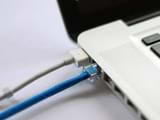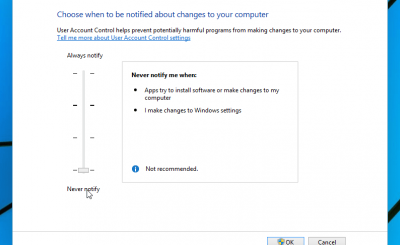Li-Fi has replaced WiFi in providing bandwidth and high-speed data connection by using LED lights. These lights have embedded microchips that act as access points.
Li-Fi technology solves the basics of conventional wireless technology such as RF interference, spectrum saturation, and even cabling challenges.
Li-Fi enables next-generation wireless connectivity
You can count on this Li-Fi technology as it supports features that are important in providing seamless wireless connectivity.
1. Speed
Li-Fi allows you to stay mobile and still access the Internet at super speeds about 100 times faster than conventional WiFi systems. It also supports multi-user access.
2. Popularity
Li-Fi allows any light source (i.e. street light or car light) to be used for wireless communication and connectivity.
3. Reliable
Li-Fi can provide seamless wireless connectivity in RF resistant environments such as hospitals, airplanes, etc. In addition, the technology is reliable as it allows interference-free communication.
4. Unmatched Bandwidth
Li-Fi allows unlimited data access with increased capacity using the photon data spectrum. Huge power 1000 times greater than the traditional RF spectrum used.
5. Security
Li-Fi transmission is limited and location-specific. Therefore, the risk of data leakage or being attacked by cybercriminals is very small in this case.
6. Effective
Li-Fi is easy to deploy because it uses existing wiring and infrastructure. Therefore, it examines the costs incurred in purchasing, installing, configuring and then managing network equipment.
7. Affordable price
LEDs are known to use less energy than standard bulbs in lighting systems. They tend to last 6 times longer and provide better illumination than conventional bulbs.
8. Latency
Li-Fi latency is three times lower than conventional Wi-Fi systems. This allows Li-Fi to take advantage of advanced augmented reality (AR) and virtual reality (VR) applications.
Will Li-Fi work well in well-lit rooms or in bright sunlight?
Li-Fi works even during the day when there is plenty of sunlight. The main reason for this is that the minute light intensity adjustments of the LEDs can be clearly detected even in bright sunlight conditions.
Here, it is important to note that Li-Fi works based on detecting rapidly changing light intensity and is not affected by sunlight creating slow light variations. Basically, light in Li-Fi is modulated at a very high rate, however, sunlight is a form of continuous light that can be filtered out at the receiving device.

Real-world Li-Fi use cases
Li-Fi enhances productivity with high-speed data transmission and secure communication. It enables high-bandwidth applications to become a reality that would seem impossible with conventional systems in place. Let’s look at some real-world Li-Fi use cases.
1. Communication
Li-Fi enabled lights are uniquely identified by an IP address. This facilitates complex geographic analysis and enables analysis of user behavior, by tracking and analyzing user data as they interact with online media content, through Li-Fi-enabled lights. The IP address helps to apply layers of security to the underlying Li-Fi lights.
2. Defense
Li-Fi minimizes the possibility of external attacks because the Li-Fi signal is contained within a defined area. Furthermore, wireless connectivity is restricted only to locations with bright light, unlike conventional wireless technology. This inherent property of Li-Fi for data security is what sets it up against other wireless technologies.
According to BBC News, light technology has now infiltrated US military barracks. PureLi-Fi recently announced a $4.2 million deal, providing an arsenal of optical wireless communications to the US Army in Europe and Africa. Therefore, Li-Fi is set to play an important role in the future of defense communications.
3. Academics
Li-Fi can serve the education industry well as users can have a better learning experience with high bandwidth. In addition, large capacity promotes access to online educational videos and downloads of educational materials or resources. Immersive educational experiences with AR and VR support can also be well experienced with Li-Fi.
Under pure Li-Fi, they deployed their Li-Fi solutions at Kyle Academy High School in Ayr, Scotland to establish a wireless Internet connection. As Li-Fi enters the field of education, the future is expected to be better from here on.
4. Smart city
Street lights and vehicle lights (headlights and taillights) support Li-Fi for efficient traffic management. It can also establish vehicle networks with better vehicle-to-vehicle communication, as they share important data such as congestion information, driving conditions, and even optimal routes for traffic. to the destination.
Therefore, Li-Fi technology can help reduce accidents on the road, thus making your life safer than before.
The LED lighting system that supports Li-Fi in urban street lighting, at the front and rear of the vehicle, enables improved traffic management through vehicle-to-vehicle communication, reducing the risk of accidents and Share information about congestion, driving conditions and optimal routes.
Li-Fi can also be deployed in smart offices as part of the smart city model. According to The SmartCitiesWorld, Icade, a French real estate investment company, has been testing Philips Li-Fi-enabled lights at their smart office in Paris.
5. Travel by air
Li-Fi rejects conventional radio waves that act as a source of electromagnetic interference. Instead, it provides air customers with highly secure connections at speeds up to 100Mbps per person. This includes services like 4K video streaming, bandwidth-hungry video gaming, and other extras.
6. Wireless solution
Li-Fi can also be an energy-efficient alternative to 5G, LTE, and WiFi technologies. It can help reduce interference in densely populated areas. This technology can also assist devices in offloading and freeing up space for other users instead.
7. Health Care
Li-Fi can be deployed anywhere, especially in sensitive areas prone to electromagnetic pollution, and thus provides a high-speed data connection to life-saving devices. Further Li-Fi allows easy access to patient information and monitoring tools for better treatment outcomes.
8. Industry 4.0
Li-Fi enables faster access to real-time updates and insights, which can reduce predictive downtime and plan timely machine maintenance. This can help increase output, reduce costs and provide a high standard of service.
Source link: Can Li-Fi replace conventional wireless technologies?
– https://techtipsnreview.com/





